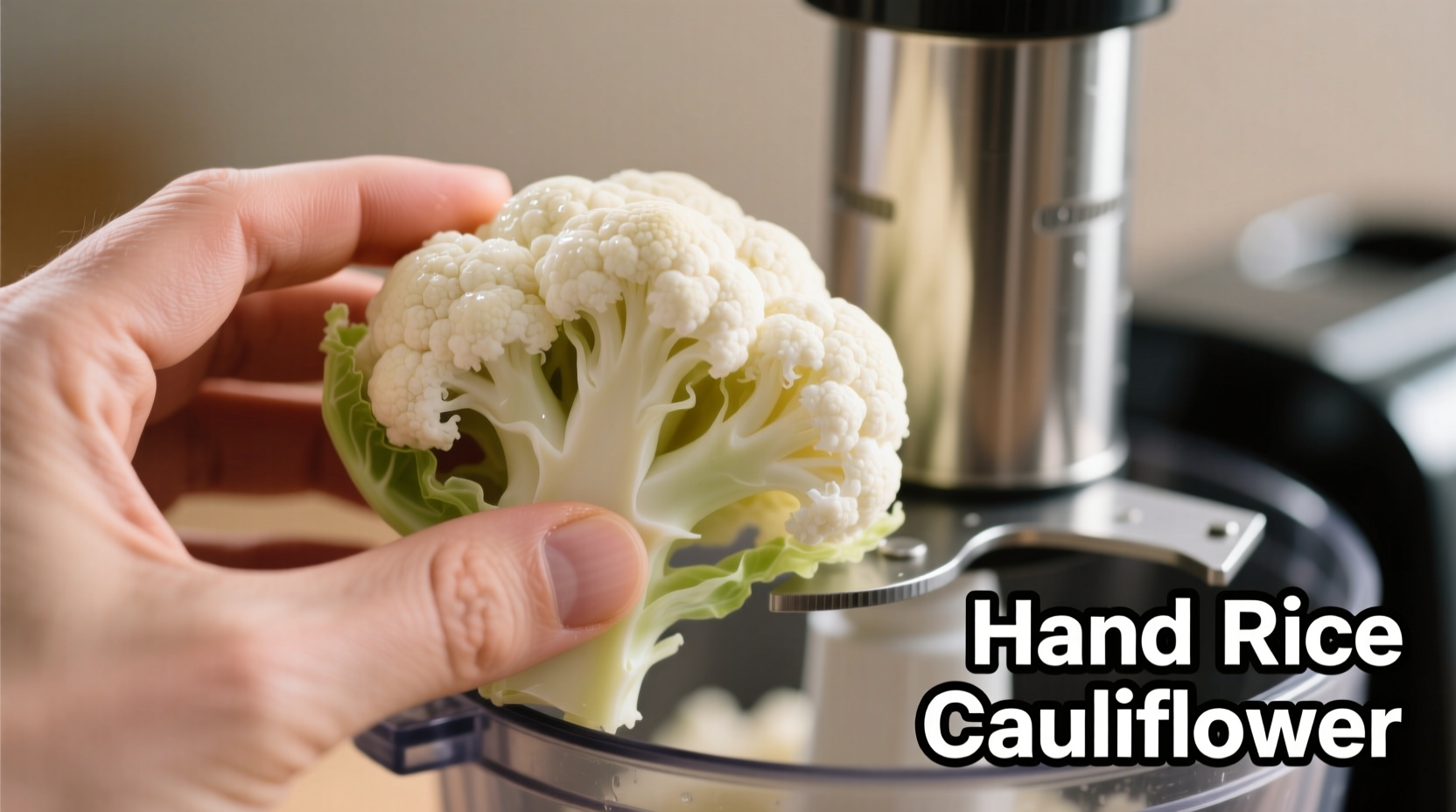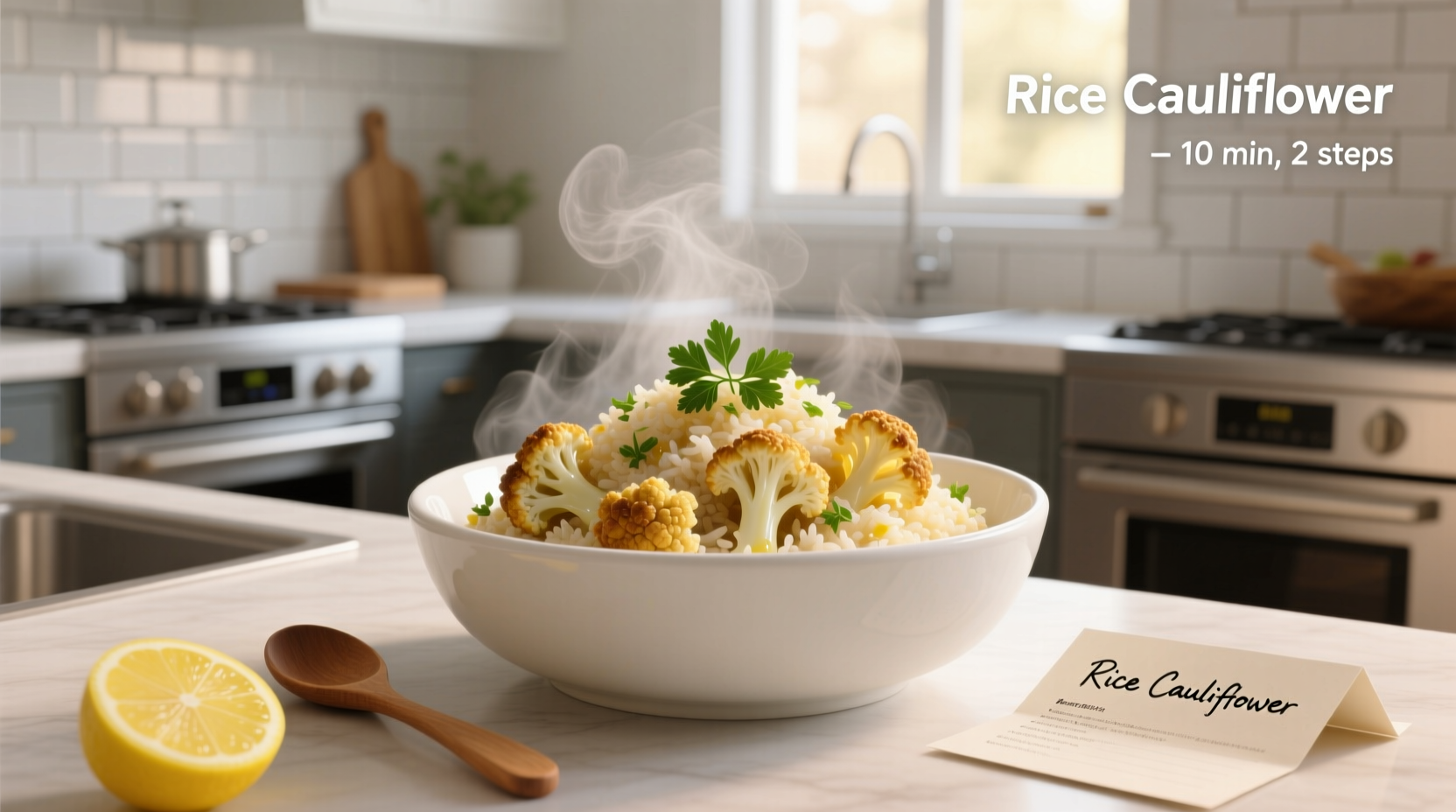Transforming cauliflower into rice-sized grains gives you a nutrient-packed, low-carb alternative that works in nearly any rice-based dish. With just 25 calories per cup compared to white rice's 200 calories, cauliflower rice delivers vitamin C, vitamin K, and fiber while keeping your meals light and healthy. Whether you're following a keto diet, managing blood sugar, or simply wanting to eat more vegetables, learning how to properly rice cauliflower unlocks countless culinary possibilities.
Why Riced Cauliflower Beats Traditional Rice
According to USDA nutritional data, one cup of raw cauliflower rice contains just 25 calories, 5 grams of carbohydrates, and provides 77% of your daily vitamin C needs. Compare this to white rice which packs 200 calories and 45 grams of carbs per cup. The moisture content of properly prepared cauliflower rice (around 92%) creates that satisfying "rice-like" texture while delivering significantly more nutrients. Professional chefs like those at the Culinary Institute of America recommend riced cauliflower as the top vegetable substitution for carb-conscious cooking.
Four Practical Methods to Rice Cauliflower
Food Processor Method (Fastest Option)
This professional kitchen technique delivers consistent results in minutes:
- Remove leaves and hard stem from 1 medium head cauliflower
- Cut into 1-2 inch florets (smaller pieces process more evenly)
- Add to food processor in batches (don't overcrowd)
- Pulse 8-10 times until rice-sized (1-2 second pulses)
- Check texture - should resemble couscous, not paste
- Spread on clean kitchen towel, squeeze gently to remove excess moisture
Time required: 5 minutes for 4 servings. This method produces the most uniform "grains" that cook evenly without becoming mushy.
Box Grater Method (No Appliance Needed)
When you don't have a food processor, this traditional technique works well:
- Remove outer leaves and cut cauliflower into quarters
- Hold one quarter firmly and rub against large holes of box grater
- Rotate cauliflower to grate all sides
- Discard remaining core piece
- Place grated cauliflower on paper towels, gently press to remove moisture
Time required: 8-10 minutes for 2 servings. While more labor-intensive, this method gives you better control over grain size. Chefs at America's Test Kitchen found this produces slightly drier cauliflower rice that's less prone to sogginess.
| Method | Time Required | Texture Quality | Best For |
|---|---|---|---|
| Food Processor | 5 minutes | Most uniform | Large batches, meal prep |
| Box Grater | 8-10 minutes | Slightly drier | Small batches, no appliance |
| Knife Method | 12-15 minutes | Most textured | Fine texture control |
| Pre-Riced | 0 minutes | Inconsistent | Emergency use only |
Knife Method (Traditional Technique)
For those who prefer manual preparation:
- Cut cauliflower into thin slices
- Stack slices and cut into thin strips
- Rotate strips 90 degrees and dice into small pieces
- Spread on towel, gently press to remove moisture
Time required: 12-15 minutes for 2 servings. This method produces slightly larger, more textured "grains" that hold their shape well in stir-fries. According to food science research from the University of California, Davis, this technique preserves more of cauliflower's natural structure, preventing excess moisture release during cooking.
Pre-Riced Option (Convenience Choice)
While fresh-prepared always tastes better, store-bought riced cauliflower works in a pinch:
- Look for packages with no added ingredients
- Drain excess liquid before using
- Pat dry with paper towels
- Use within 2 days of opening
Time required: 2 minutes. The FDA recommends checking expiration dates carefully as pre-riced cauliflower has higher spoilage risk due to increased surface area. For best results, treat store-bought riced cauliflower the same way you would fresh-prepared by removing excess moisture before cooking.

Pro Tips for Perfect Cauliflower Rice Every Time
Avoid these common pitfalls that turn your healthy substitute into a soggy mess:
Moisture Management Is Key
Cauliflower contains 92% water, which explains why improper preparation leads to mushy results. After ricing, always spread the grains on a clean kitchen towel or paper towels and gently press to remove excess moisture. For meal prep, spread riced cauliflower on a baking sheet and refrigerate uncovered for 30 minutes to allow surface moisture to evaporate. This simple step prevents steaming instead of sautéing when you cook it.
Cooking Techniques That Make a Difference
Unlike traditional rice, cauliflower rice shouldn't be boiled or steamed for long periods. For best results:
- Sauté in hot pan with 1 tsp oil for 3-5 minutes until tender-crisp
- Avoid covering the pan (traps steam and creates sogginess)
- Add salt at the end (salt draws out moisture)
- For raw applications like sushi bowls, use immediately after ricing
Flavor Enhancement Secrets
Raw cauliflower rice has a mild flavor that readily absorbs seasonings:
- Add 1 tsp rice vinegar before cooking for authentic rice flavor
- Toast with 1/4 tsp turmeric for color and health benefits
- Mix in 1 tbsp nutritional yeast for cheesy, umami notes
- Finish with fresh herbs like cilantro or parsley
Storage Guidelines for Maximum Freshness
Proper storage extends the shelf life of your prepared cauliflower rice:
- Refrigerate in airtight container for up to 4 days
- Place paper towel in container to absorb excess moisture
- Freeze in portion-sized bags for up to 3 months
- Thaw frozen cauliflower rice in refrigerator overnight
According to food safety guidelines from the USDA Food Safety and Inspection Service, cooked cauliflower rice should be consumed within 3-4 days when properly refrigerated. For meal preppers, freezing in single-serving portions makes weeknight cooking effortless.
Delicious Ways to Use Your Cauliflower Rice
Move beyond basic substitutions with these creative applications:
- Fried "Rice" - Sauté with eggs, peas, carrots, and soy sauce
- Stuffed Peppers - Mix with ground turkey and tomato sauce
- Pizza Crust - Press into pan, bake until firm, then add toppings
- Sushi Bowls - Top with raw fish, avocado, and pickled ginger
- Casseroles - Substitute for rice in baked dishes
Troubleshooting Common Problems
Fix these issues before they ruin your meal:
- Soggy rice - You didn't remove enough moisture before cooking. Next time, press firmly with paper towels.
- Mushy texture - Overcooked or processed too finely. Pulse less and cook for shorter time.
- Bland flavor - Cauliflower needs seasoning. Add salt, acid, and aromatics during cooking.
- Uneven texture - Florets were different sizes when processed. Cut more uniformly next time.











 浙公网安备
33010002000092号
浙公网安备
33010002000092号 浙B2-20120091-4
浙B2-20120091-4